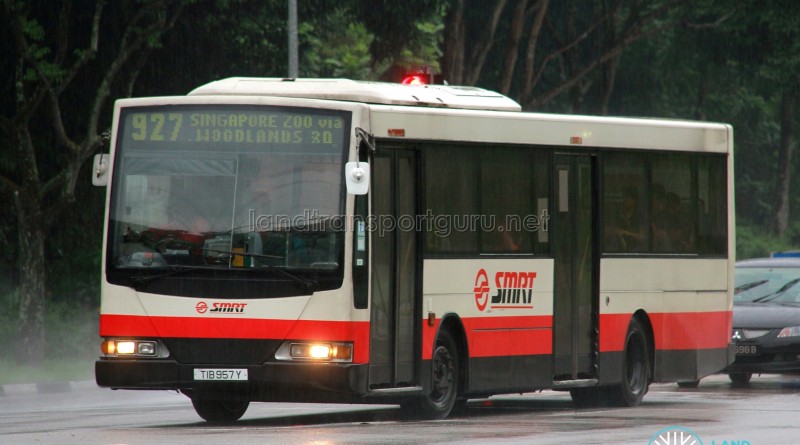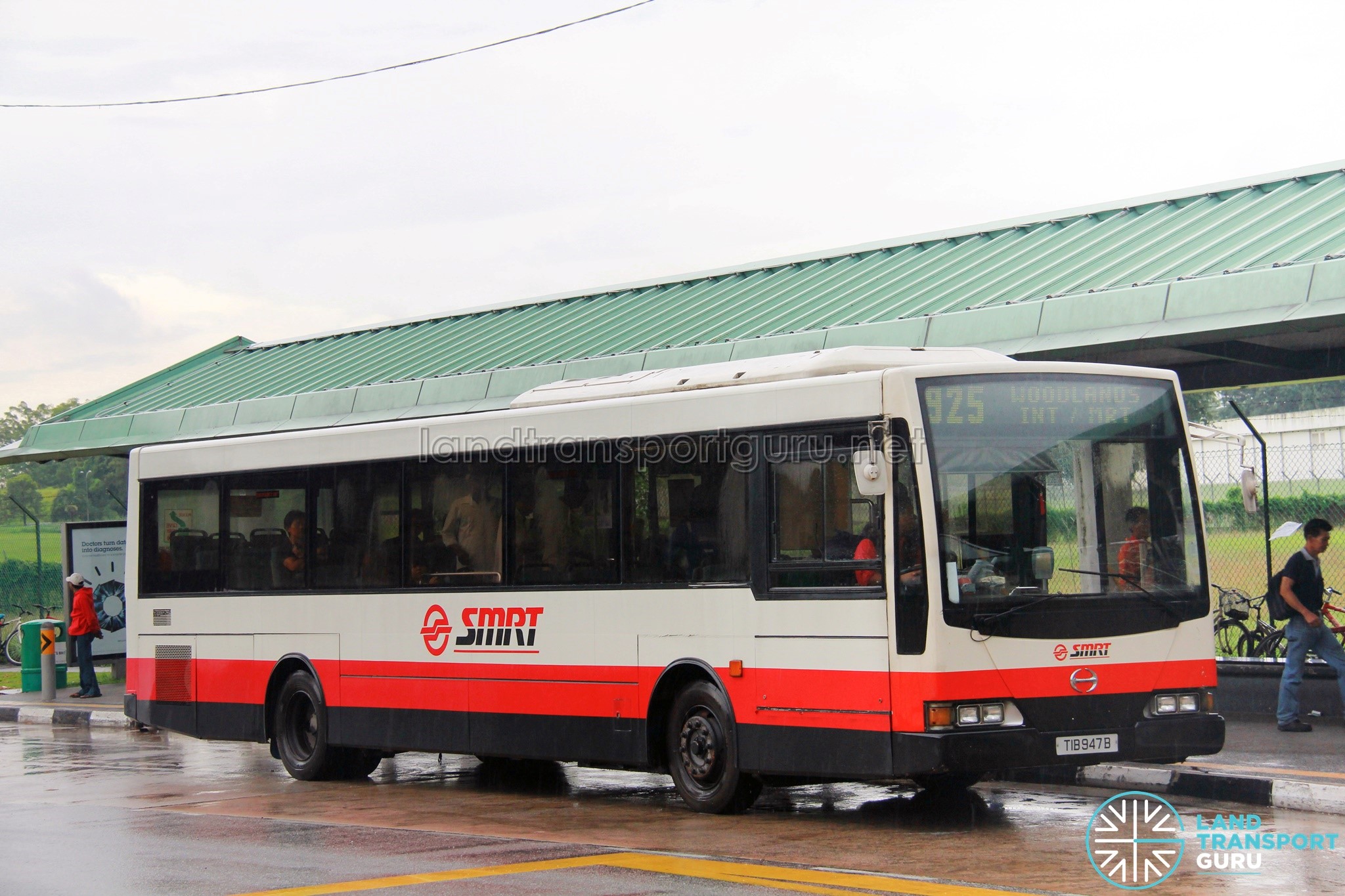The Hino HS3KRK is a rear-engined, single-deck city bus chassis built by Japanese bus manufacturer Hino Motors.
Trans-Island Bus Services (TIBS) acquired 12 of such buses between 1998 and 1999, in two different models. A HS3KRKA demonstrator bus was first procured, later followed up with 11 more buses of the HS3KRKK model the following year. They continued operations with SMRT Buses, the successor of TIBS.
These buses could be seen as direct replacements for older Hino HT238K buses procured in the late-1980s which were transferred to the City Shuttle Service (CSS) fleet, as well as a continuation of a legacy of Hino buses which were the first model of buses to be procured by TIBS in 1983.
The Hino HS3KRK was fully retired by April 2013, several years earlier than its statutory lifespan.
Technical Information:
The Hino HS3KRK was a right-hand drive bus chassis produced by Hino Motors. Not much is known about this model of chassis.
TIBS Hino HS3KRKA – Demonstrator
In 1998, Trans-Island Bus Services (TIBS) introduced a Hino HS3KRKA bus for demonstration purposes. It was bodied with a Volgren CR221 body and registered in January 1998 as TIB905Y, entering service in 1998.
| Basic Technical Specifications | |
| Engine | Hino K13U, 13267cc Powe/torque rating of 266 hp (198 kW) @ 1900 rpm / 1050 Nm @ 1450 rpm |
| Transmission | ZF Ecomat 4HP 500 gearbox, four-speed automatic |
| Bodywork | Volgren CR221 bodywork Chassis built in Japan, bodywork supplied by Volgren of Australia and assembled in Malaysia by Gemilang |
| EDS | Transit Media TwinVision LeDot Electronic Display Signage (EDS) Green flip-dot matrix design |
| Air-conditioning | Konvekta underfloor air-conditioning |
| Doors | Deans |
The bus featured a unique bodywork design mirroring European buses of the similar era. It was one of two demonstrator units produced by Gemilang; the other unit was delivered to another bus operator in Kuala Lumpur.
The flip-dot type Electronic Display Signage (EDS) unit fitted to this bus – the Transit Media TwinVision LeDot – was the first of its kind in TIBS. It featured individual LEDs behind each disc for enhanced visibility and would be rolled out on future batches of buses.
Unlike the HS3KRKK model later acquired, this HS3KRKA demonstrator unit was equipped with underfloor air-conditioning and hence did not require a roof-mounted air conditioning pod. On the interior, the bus is arranged in a standard four-abreast seating configuration with a standing area opposite the rear exit door.
The bus has a licensed carrying capacity for 80 passengers, comprising 41 seated and 39 standing passengers.
Later modifications:
TIB905Y was delivered with a small nearside Electronic Display Signage (EDS) unit, which displays the route number. It was later replaced with a larger-sized unit.
Additionally, the bus was delivered with Vogelsitze System 600 seats with fabric seat covers, which frequently trapped dust. They were replaced with foam-padded PVC seat covers in the late 2000s.
TIBS Hino HS3KRKK – Production Batch
Following an evaluation of the initial Hino HS3KRKA demonstrator, Trans-Island Bus Services (TIBS) purchased a small batch of 11 Hino HS3KRKK buses. They were bodied with a Volgren CR221 body and registered between August and November 1999 as TIB947B – TIB957Y, in numerical sequence after TIBS’s first batch of Dennis Lance buses.
| Basic Technical Specifications | |
| Engine | Hino K13U, 13267cc Powe/torque rating of 266 hp (198 kW) @ 1900 rpm / 1050 Nm @ 1450 rpm |
| Transmission | ZF Ecomat 4HP 500 gearbox, four-speed automatic |
| Bodywork | Volgren CR221 bodywork Chassis built in Japan, bodywork supplied by Volgren of Australia and assembled in Malaysia by SupporTrans |
| EDS | LAWO Aluma Electronic Display Signage (EDS) Green flip-dot matrix design Mobitec MobiLED Orange LED matrix (TIB952K only) |
| Air-conditioning | Denso roof-mounted air-conditioning pod |
| Doors | SMC Transit |
The bus featured the standard Volgren CR221 bodywork which was assembled in Malaysia by SupporTrans, using complete-knock-down (CKD) kits supplied by Volgren of Australia. This design would become more widespread with the later introduction of Mercedes-Benz O405, Dennis Lance and Mercedes-Benz O405G buses, all featuring identical exterior bodywork designs and also assembled by SupporTrans using Volgren body kits.
On the interior, the bus is arranged in a standard four-abreast seating configuration, but unlike TIB905Y, the standing area was relocated to the nearside (left side) of the bus, just ahead of the rear exit door. Engine and transmission units are identical to the Hino HS3KRKA demonstrator unit.
The LAWO Aluma EDS was fitted in favour of the Transit Media EDS earlier fitted to TIB905Y. Additionally, it was delivered with foam-padded PVC seat covers, which would last until retirement.
The bus has a licensed carrying capacity for 80 passengers, comprising 41 seated and 39 standing passengers.
External Links & References:
Back to Bus Models
Back to Bus Articles


this is the last hino bus on singapore roads.